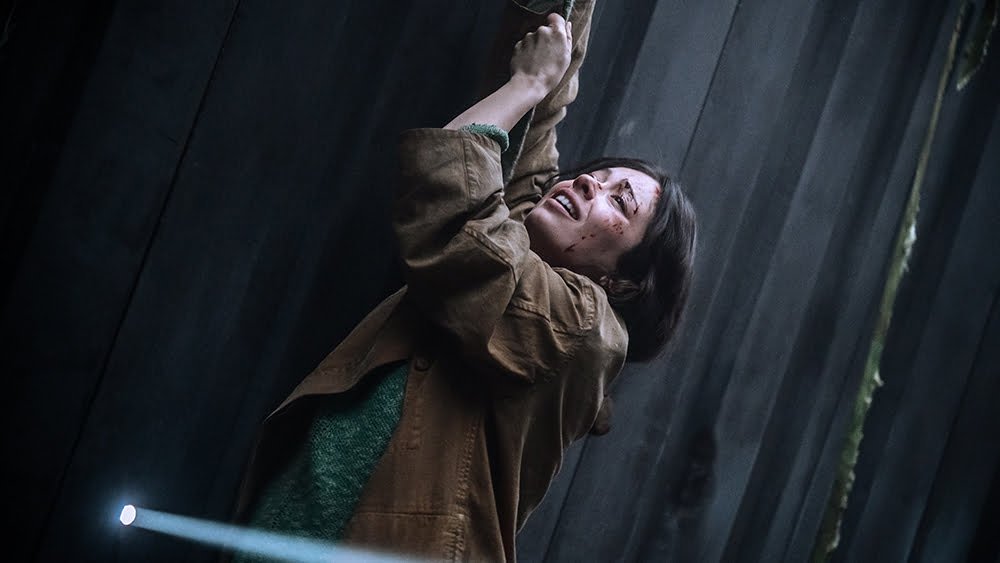‘Nowhere’ is Netflix’s Best Performing Non-English Content of 2023
[ad_1]
As 2023 hits its final straights, Spain’s “Nowhere,” a mother-baby survival thriller, rates as the most-viewed non-English title – film or series – of 2023, with 77.9 million views. It also ranks as Netflix’s second most-watched non-English movie of all time, currently punching 141.6 million hours, bettered only by Norway’s “Troll.”
“Nowhere” also has legs: No other non-English Netflix movie has punched 1.6 million views on its seventh week of release.
That achievement is all the more remarkable given that “Nowhere” is also the first title by the film’s producer Miguel Ruz and exec producer Jordi Roca at their new Madrid-based production company Rock & Ruz which they launched after the success of their first film together, Mario Casas-starrer “The Paramedic” (“El Practicante”), also on Netflix.
Made for an above-average budget for Spain, based on an original story by Indiana Lista (“Scandinoir”), “Nowhere” is co-written by producers Ruz and Ernest Riera alongside scribes Seanne Winslow and Teresa de Rosendo who particularly helped with the emotional arc of its female lead.
Directed by Albert Pintó (“Malasaña”), “Nowhere” begins in a dystopian Spain where an extreme shortage of basic resources in Europe has led to the culling of the elderly as well as pregnant women and children. Less than a handful of countries have managed to refrain from carrying out such punishing measures.
A couple, played by Anna Castillo (“A Perfect Story”) and Tamar Novas (“Broken Embraces”), have paid smugglers to escape from the ruling regime. They are put in a shipping container but later separated. Heavily pregnant, she ends up alone in a floating container after a storm upends the ship she’s on. What ensues is reminiscent of “Castaway,” “Captain Philips” and “The Room” with some “MacGyver” and “The Handmaid’s Tale” thrown into the mix.
Stuck in the massive container with her are crates of Tupperwares, television sets, earbuds and hundreds of yellow rubber ducks, among other inedible stuff.

Miguel Ruz
As the challenges mount in her sinking container, her survival instincts kick in and not unlike the popular 1980s TV detective MacGyver, learns to solve the problems she faces in ever more ingenious ways. The Tupperware containers prove to be the most useful as she floats SOS notes by the hundreds and for keeping the fish she manages to catch, among other things.
Some proof of the movie’s worldwide success is the fact that these rubber ducks have surfaced in some countries as in Peru, Ecuador and Mexico where people have taken to wearing them on their heads, a trend that has baffled many and led them to speculate about the movie’s impact.
As the Diario Xalapa newspaper in Mexico reflected: “The film is called ‘Nowhere,’ a title that revolves around a pregnant woman who is lost at sea on a container. Accompanying her is a rubber duck, which symbolizes hope… So, if you see someone on the street with a rubber duck on their head, you can consider it a message of hope.”
“Nowhere” was Netflix’s No. 1 non-English film in 61 countries. Ruz attributes its universal success to the fact that they chose to laser focus the story on one person’s primal instincts to survive. “We did not want to specify what kind of totalitarian country it was in, whether communist or Nazi. We did not want to get involved in the class or race issue, either. We just wanted something global and neutral so we chose a dystopian setting,” said Ruz, whose credits include “Black Mirror” and “Blade Runner: 2049.” “It’s in the DNA of our company to make globally appealing shows,” said Ruz.
Ruz pointed out that Netflix did not market the film or release it theatrically. “They really trusted their algorithm,” he noted, praising them for devoting a team to the development of the project.
“Ultimately, it doesn’t matter if it’s a survival-dystopian film; if you construct it well emotionally, then it will travel and people will not question what happens,” he noted.
What probably drove up the costs was the building of a pool in a sound stage in Madrid. “We dug a hole and made a proper pool, which is still there and which they use. Then we built a 12-meter (39.4 ft) container with a hydraulic system so we could shake and lift it,” said Ruz, adding that the open water scenes were shot off Sitges, Catalonia.
The ending, while far from ambiguous, leaves open the possibility of a sequel.

NOWHERE (L to R) ANNA CASTILLO as MIA in NOWHERE. Cr. EMILIO PEREDA/NETFLIX © 2022
[ad_2]
Source link

